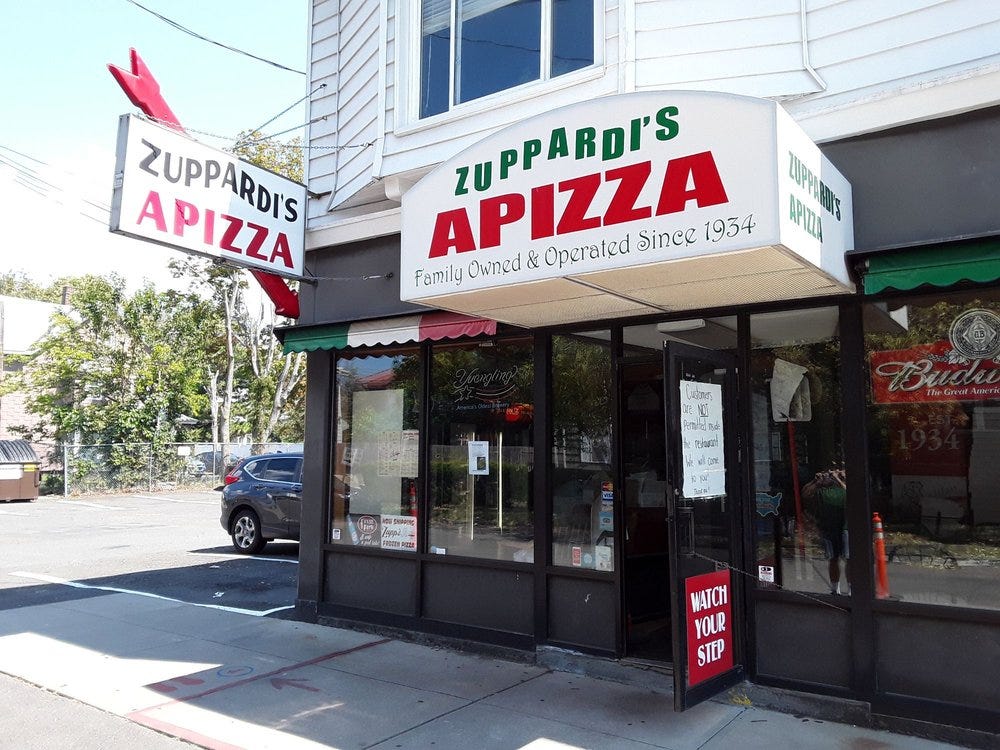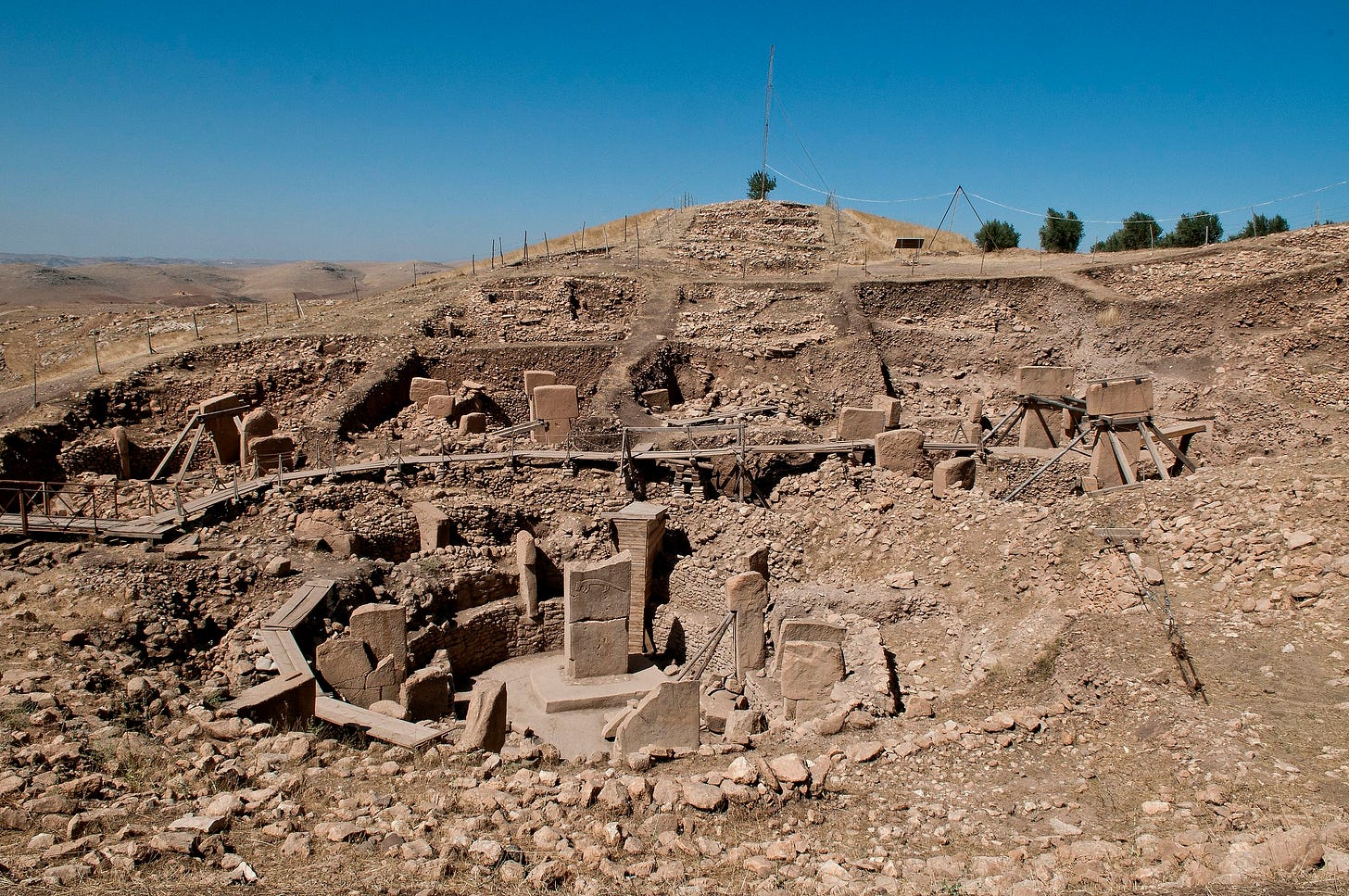A brief piece about the history of the peculiarly Connecticut word “apizza” by Jan Whitaker reminds me that I was recently asked to name my favorite pizza restaurants. (Naming favorite restaurants being something that food writers, even food historians, are often called upon to do.) My answer, of course, was Sally’s Apizza in New Haven, Connecticut, followed by Modern Apizza, also in New Haven, and Frank Pepe’s of, oddly, New Haven, Connecticut. These are not especially controversial choices, since most reasonable people who’ve eaten at any of those three restaurants will rank them near the top.
I spent seven years living in New Haven and was a semi-regular at Modern Apizza. I think Sally’s has a slight edge in taste, but the line at Modern was always short. You could frequently walk straight into Modern Apizza and find a table in a few minutes, while the line at Sally’s or Frank Pepe’s was two hours long. (Keep that in mind next time you’re in New Haven.) Of course, as a New Haven resident, a few times a year you had to have Frank Pepe’s white clam pie, or Sally’s tomato pie, or friends would visit from out of town, and those lines would have to be endured.
New Haven is a pizza town, which means that there are a dozen restaurants, you’ve never heard of, beneath those three that would be ranked the best pizza in any mid-sized city in America. My late father, who visited me in New Haven from California, twenty-five years ago, raved about Tony and Lucille’s Little Italy, an old Wooster Street restaurant that recently closed. There’s Bar, an actual night club named “Bar”, that has amazing pizza. And Zuppardi’s Apizza in West Haven would be justifiably world famous if it were located in Chicago or Brooklyn.
I’m partly thinking about this because, over the weekend, I spent 45 minutes waiting in line for barbecue and realized that, in the past decade, Nashville has become a barbecue town, something it had not previously been. There are now three BBQ places in Nashville that are worth standing in line for: Martin’s, Edley’s and the Peg Leg Porker. I live five blocks from both Martin’s and Edley’s, and five minutes by car from the Peg-Leg Porker, so I feel qualified to pass judgement. I always tell visitors that Martin’s has the best pulled pork and best fried bologna sandwich, Peg Leg the best dry-rub ribs and Edley’s the best side dishes, including the world’s best banana pudding. But, as with New Haven, there are several old standbys that are nearly as good as the top three, like Whitt’s, an unassuming Nashville chain that’s reliably tasty.
On Friday night last, I was not waiting in line for any of those places, but for an entirely new restaurant, Bringle’s Smoking Oasis, a Texas-style brisket place opened earlier this year by Cary Bringle, the pitmaster behind the Peg Leg Porker. It was a pretty good take on the Texas style, and I’ll go back, although it wasn’t quite as good as the best BBQ joints in Texas.
So there’s my question, why is so difficult to duplicate New Haven style pizza outside of coastal Connecticut, or Texas barbecue outside of the Hill Country? I’ve been to Frank Pepe’s in Boston and it’s not as good as Frank Pepe’s in New Haven. It’s competent (good and tasty) but not great pizza. Martin’s, Edleys and Peg Leg are all producing variations of a West Tennessee pork barbecue, a native, mostly local tradition. But when Carey Bringle, as talented as he is at Tennessee pork, does a Texas brisket, it’s competent (good and tasty) but not great. Someone explain this mechanism to me. How does the location affect taste, even when the ingredients and chefs seem to be identical?
Second item, if you want to know what I find exciting, it’s this: an article about Karahan Tepe, an extremely ancient archeological site in southern Turkey near Göbekli Tepe.
I often tell students that if I were I starting over, I might become an archeologist instead of a historian, and the discoveries around Göbekli Tepe are the reason why. (Well, that and the all new work done with very old DNA, and the discoveries about ancient populations that have followed it.)
The idea that there was an 11,000 year old, pre-agricultural civilization (a hunter-gatherer civilization!) that produced massive stone monuments scattered over several hundred square miles in Southern Turkey is mind-boggling. It’s such an exciting find that, were I younger, I’d be tempted to become an archeologist and join the dig. Archeology is exciting again!
Thanks for reading! I’ll see you on Thursday with something new.






I maintain that Modern is the best, specifically the fried onion and pickled pepper pizza. With a cold beer it approaches what I imagine paradise must be like.
Regarding the burying of the ancient city. This doesn’t seem that uncommon to me. I live in a city that has issues with flooding and the entire downtown was raised 10 feet, sometime in the early 1900’s. You can now take tours of the underground old city. Maybe the reason was that simple.